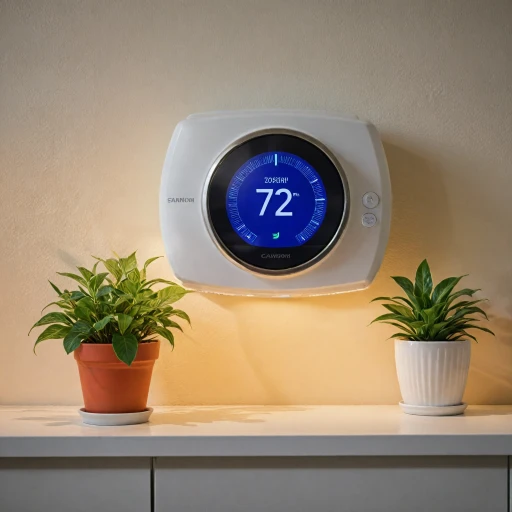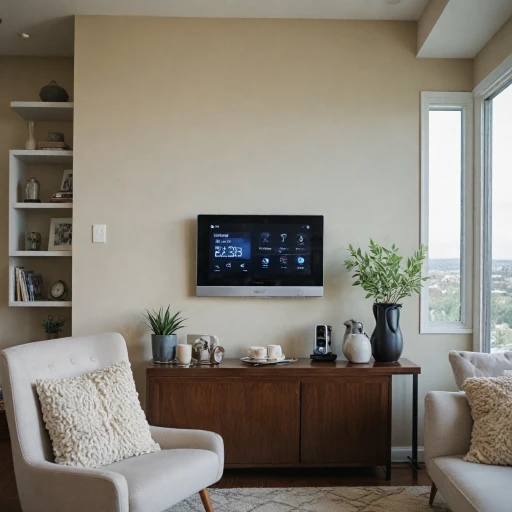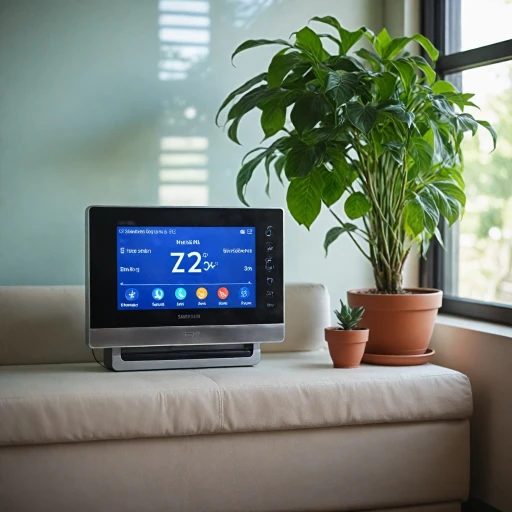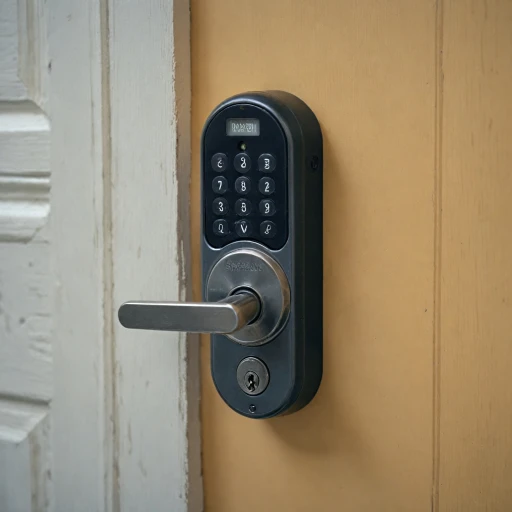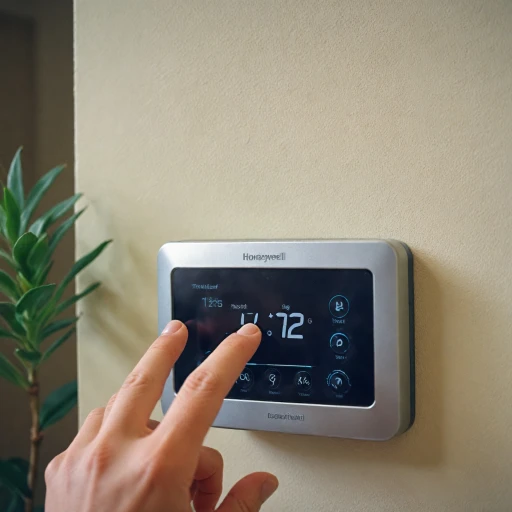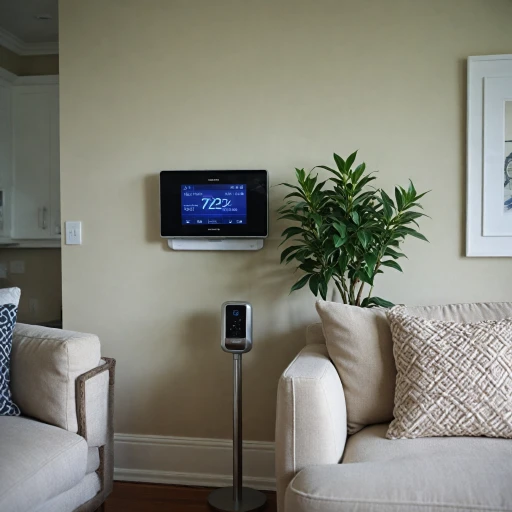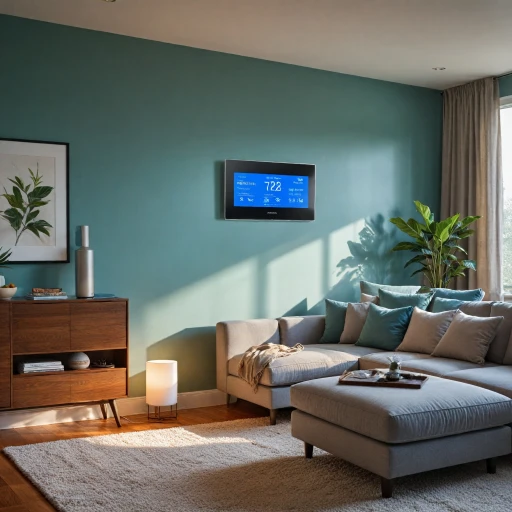
Understanding Remote Thermostats
Introduction to Smart Thermostats
Smart thermostats are modern solutions that provide enhanced control over your home's heating and cooling systems. With the integration of technology, these devices offer remote control capabilities, allowing users to adjust settings conveniently from anywhere. Leading brands such as ecobee and Google Nest offer a range of options, each with its unique features designed to improve energy efficiency and cost savings.Remote Accessibility and Control
The ability to monitor and adjust your home’s temperature remotely is a significant advantage of smart thermostats. Using dedicated apps, such as those offered by Amazon Alexa or Apple HomeKit, homeowners can change settings even when away from home. This feature not only contributes to energy savings by optimizing heating and cooling when necessary, but it also ensures comfort upon your return. For more insights, learn how to enhance your comfort with a remote-controlled thermostat.Why Smart Thermostats Matter
Smart thermostats like the Nest Learning Thermostat or the Sensi Touch not only empower users with remote control but also offer programmable options. These thermostats can learn your schedule over time, automatically adjusting settings to maintain ideal temperatures while preventing unnecessary energy use. This "learning" capability is a great example of how technology can make life easier and more cost-effective. Beyond just budget-friendly features, smart thermostats contribute to environmental sustainability by reducing energy consumption. As they become integrated with broader smart home systems, their role in creating more efficient living environments becomes even more pivotal. As technology continues to evolve, smart thermostats will likely incorporate more advanced functionalities, making them an essential component in both modern and traditional homes.Energy Efficiency and Cost Savings
Maximizing Energy Efficiency with Smart Thermostats
One of the primary advantages of utilizing remote thermostats is the potential for significant energy savings. These devices go beyond traditional thermostats by not only offering precise temperature control but also by intelligently optimizing heating and cooling operations. Consider the capabilities of a smart thermostat, like the Ecobee or Nest thermostat, which adjusts temperatures based on your schedule and presence. These are equipped with advanced sensors that learn your routine and adapt the climate settings, reducing unnecessary energy usage. This adaptability ensures that you maintain comfort without constant manual adjustments. Moreover, programmable thermostats such as the Nest Learning Thermostat make it simple to have automated schedules, allowing heating and cooling systems to operate at reduced levels when you're not at home. This leads to notable energy savings over time. Many smart thermostats integrate seamlessly with voice assistants like Amazon Alexa, Google Assistant, and Apple HomeKit. This integration allows for effortless control using voice commands or smartphone apps, providing an added layer of convenience in managing your home's climate remotely. A compelling feature of some models is their ability to provide real-time energy reports, enabling you to understand and monitor your energy consumption better. With these insights, you can make informed decisions about your energy use and adjust settings to further enhance efficiency. Choosing to transition to a smart thermostat can result not only in lower utility bills but also in a reduced carbon footprint, aligning with eco-friendly living. If you're considering making the switch, it’s worthwhile to explore the possibilities of a remote control thermostat and how it can enhance your comfort and efficiency. Enhance your comfort with a remote-controlled thermostatConvenience and Control
Smart Utility and Effortless Control
Remote thermostats significantly enhance convenience and control over your home's temperature settings. By integrating cutting-edge technology, these smart devices make it easy for homeowners to manage their heating and cooling systems remotely. The best smart thermostats, like the Google Nest, Ecobee Smart, and others, have user-friendly interfaces that allow adjustments through a touch screen or a smartphone app. Whether you're using the Google Assistant, Alexa Google integration, or Apple HomeKit, managing your climate settings is just a voice command away. With the use of remote control features, whether via an app or compatible smart speakers, users enjoy unparalleled flexibility. Imagine fine-tuning your thermostat premium settings without leaving your couch or having the Sensi Touch thermostat adapt your environment to your daily routine. Additionally, the convenience features of programmable thermostats ensure you maintain a comfortable home environment. Users can set specific temperature schedules depending on their routine, leading to potential energy savings by optimizing energy use according to occupancy patterns. For more insights on enhancing your daily climate management, consider exploring how smart technology, like these thermostats featuring remote sensors, can improve your home comfort levels effectively.Integration with Smart Home Systems
Seamless Integration into Your Smart Home Ecosystem
Integrating a remote thermostat within your smart home ecosystem offers unparalleled convenience and control. Whether you're using Amazon Alexa, Google Assistant, or Apple HomeKit, these systems provide the ability to adjust your home's temperature through voice commands or via easy-to-use apps. This makes it possible to manage your heating and cooling systems from the comfort of your couch or while you're on the go.
Many premium smart thermostats, such as the Ecobee Smart and Google Nest, have been designed to work seamlessly with your existing smart home devices. This integration allows not only remote control of the thermostat but also enhanced energy efficiency by optimizing heating and cooling based on your routines and preferences.
Modern programmable thermostats like the Nest Learning or Sensi Touch Thermostat offer intuitive touch screen displays and are equipped to learn your temperature preferences over time, adjusting settings automatically for optimal comfort and efficiency. By intelligently coordinating with other smart devices, such as smart blinds and lighting systems, they enhance your home's overall smart operation.
When choosing the best thermostat for your smart home, consider compatibility with the devices you already own or plan to purchase. This ensures a unified experience across your entire home. Utilizing these integrations, the ease of control and energy savings become more accessible, making your investment in a remote thermostat not just a convenience, but a step towards a smarter, more efficient home.
Challenges and Considerations
Potential Hurdles and Important Factors
When considering a smart thermostat for your home, it's essential to understand not only the remarkable benefits but also the potential challenges and key factors to keep in mind. While the functionality and ease of use are enticing, getting the most out of your investment often involves addressing a few common hurdles.- Compatibility Issues: Not all smart thermostats are compatible with every heating and cooling system. Brands like Ecobee Smart and Nest Learning prioritize compatibility, but always check if your specific model works seamlessly with your current system.
- Connectivity Requirements: Reliable Wi-Fi is crucial for the optimal functioning of remote control thermostats. A fluctuation in your internet connection can affect the ability to manage your thermostat remotely, whether through an Amazon Alexa or Google Assistant interface.
- Privacy and Security Concerns: As with most smart devices, privacy can be a concern. Ensuring that your thermostat and its accompanying app are secure can provide peace of mind. Manufacturers are committed to enhancing security, but it's advisable to frequently update your device's firmware.
- Initial Investment: High-end options like the Nest Thermostat Premium or Sensi Touch feature advanced technology but may come with a higher price tag. Consider balancing desired features with your budget.
- Learning Curve: The extensive features, such as those in a programmable thermostat or Apple HomeKit integrations, can be overwhelming for new users. Resources and customer support can make the transition smoother and empower users to maximize energy savings.
Choosing the Right Remote Thermostat
Selecting the Ideal Thermostat for Your Needs
When it comes to choosing a remote thermostat, several factors come into play that can help you maximize the benefits described in earlier sections. Here's a succinct guide to assist you in making an informed decision.
- Compatibility with Your Home System: Ensure the thermostat you select is compatible with your existing heating and cooling system. If you're using Apple HomeKit, for instance, make sure it's compatible with your smart home setup.
- Ease of Use and Control Features: Look for a smart thermostat that offers user-friendly interfaces, such as a touch screen or an easy-to-navigate app, allowing you to control the temperature settings conveniently from your phone. Models like Ecobee smart and Google Nest are known for their intuitive design.
- Integration with Home Assistants: The ability to integrate with voice-controlled devices such as Amazon Alexa, Google Assistant, and Apple HomeKit adds a layer of convenience in managing your home's climate remotely.
- Energy Efficiency Capabilities: As mentioned earlier, energy savings is a significant advantage of smart thermostats. Consider options that offer programmable settings, allowing you to tailor your heating and cooling schedule to reduce energy wastage.
- Product Reviews and Reliability: Take note of customer feedback and professional reviews to gauge the reliability and performance of the thermostat you're considering. Brands like Nest Learning Thermostat and Sensi Touch have garnered positive user reviews for their performance.
- Price and Features Balance: Determine a budget and assess which features, like remote control capabilities or additional sensors, are most important for your specific needs. While a thermostat premium model may offer advanced features, a moderately priced thermostat could still provide all necessary functionalities.
By evaluating these aspects, you can choose a smart thermostat that aligns with your lifestyle and enhances your home's energy efficiency and comfort.

